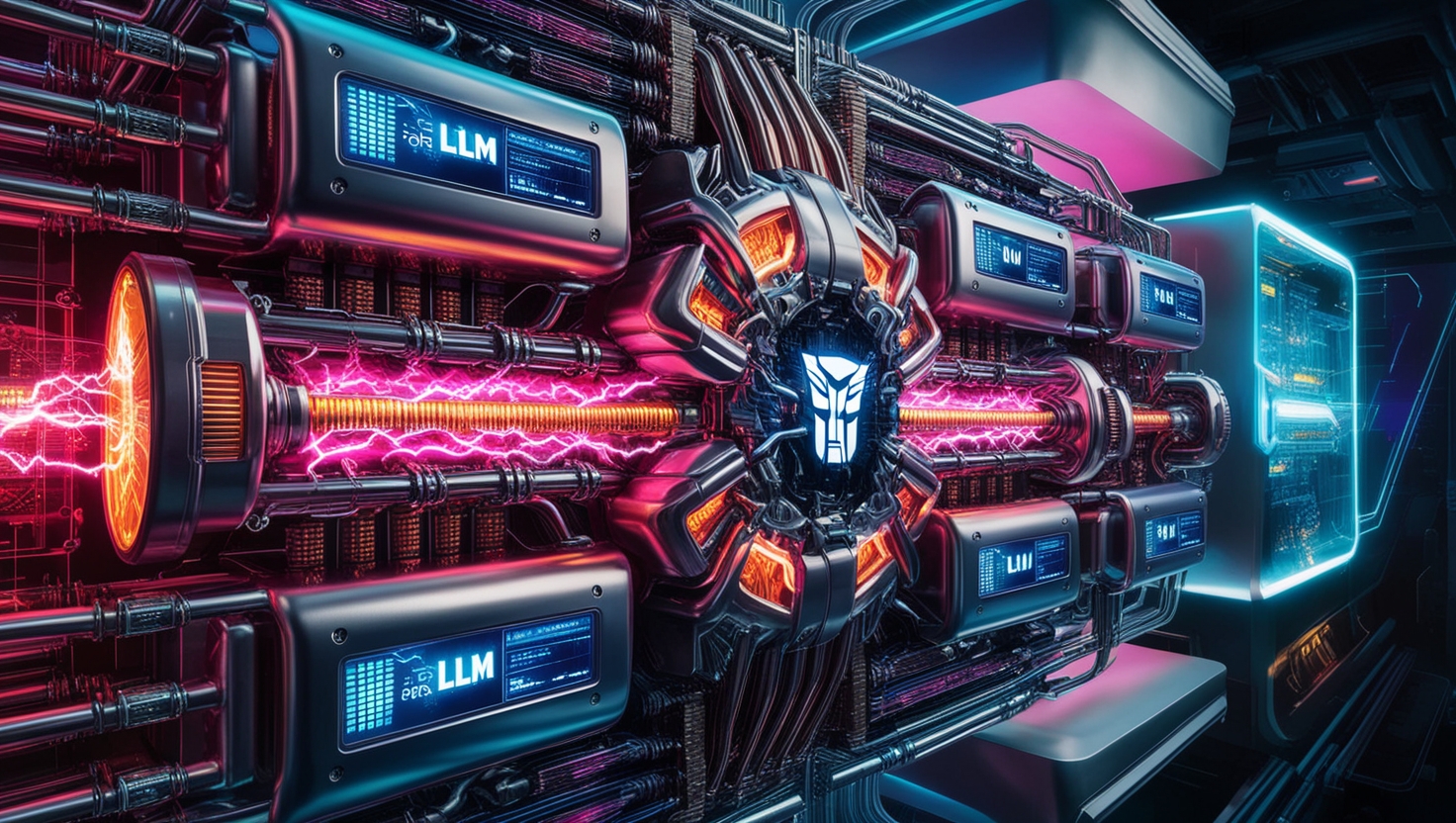
Transformer²: The Evolutionary Leap in Artificial Intelligence
In the grand tapestry of human innovation, few threads have been as transformative as the advent of artificial intelligence. From the humble beginnings of rule-based systems to the towering architectures of deep learning, AI has evolved into a force that reshapes industries, redefines creativity, and challenges our understanding of intelligence itself. At the heart of this revolution lies the Transformer architecture, a paradigm-shifting innovation introduced in the seminal 2017 paper “Attention is All You Need.” Now, Sakana AI, a Tokyo-based startup co-founded by Llion Jones—one of the original authors of the Transformer paper—and David Ha, a former Google Brain researcher, has unveiled Transformer², a self-adaptive AI system that promises to redefine the boundaries of machine learning.
This article explores the profound implications of Transformer², its technical innovations, and its potential to reshape the future of AI. Drawing inspiration from nature and evolutionary principles, Transformer² represents not just an incremental improvement but a fundamental reimagining of how AI systems learn, adapt, and evolve.

The Genesis of Transformer²
The original Transformer architecture revolutionized natural language processing (NLP) by introducing the concept of self-attention, enabling models to process sequences of data with unprecedented efficiency and accuracy. This innovation gave rise to models like GPT, BERT, and their successors, which have become the backbone of modern AI applications. However, despite their remarkable capabilities, these models are fundamentally static. They are trained on specific tasks and datasets, and their ability to adapt to new environments or tasks is limited without extensive retraining.
Transformer² addresses this limitation by introducing self-adaptivity, a concept inspired by the dynamic and evolving systems found in nature. Just as the human brain rewires itself in response to new experiences or injuries, Transformer² dynamically adjusts its weights and architecture to optimize performance for new tasks. This capability is not merely a technical achievement but a philosophical one, reflecting a deeper understanding of intelligence as a process of continuous adaptation and growth.
Core Principles of Transformer²
At its core, Transformer² is built on two key principles: task analysis and task-specific adaptation. When presented with a new task, the model first analyzes the requirements and then applies task-specific adjustments to its weights. This process is facilitated by Singular Value Decomposition (SVD), a mathematical technique that breaks down the model’s weight matrices into smaller, meaningful components. By enhancing or suppressing specific components, Transformer² can adapt to diverse tasks with minimal additional parameters.
This approach stands in stark contrast to traditional methods like LoRA (Low-Rank Adaptation), which require manual fine-tuning and are less efficient. Transformer² leverages Singular Value Finetuning (SVF), a method that uses reinforcement learning to optimize the combination of weight matrix components for different tasks. For example, a math task might rely heavily on one component, while a language understanding task might prioritize another. This flexibility allows the model to excel across a wide range of domains, from coding to visual understanding.
Technical Innovations
- Singular Value Finetuning (SVF):
SVF is the cornerstone of Transformer²’s adaptability. By decomposing weight matrices and optimizing their components, the model can dynamically adjust its behavior to suit the task at hand. This process is guided by reinforcement learning, which iteratively refines the model’s performance based on feedback from the environment. - Cross-Domain Transferability:
One of the most remarkable features of Transformer² is its ability to transfer learned adaptations across different domains. A model trained on language tasks can be applied to vision or reinforcement learning tasks without additional training. This universality is achieved by leveraging the attention matrices common to all Transformer layers, enabling seamless adaptation. - Efficiency and Scalability:
By dynamically adjusting its weights, Transformer² reduces the computational cost and memory requirements typically associated with large language models (LLMs). This makes it a practical solution for real-world applications, where efficiency and scalability are critical.
Applications of Transformer²
- Natural Language Processing:
Transformer² has demonstrated superior performance in tasks like text generation, translation, and summarization. Its ability to adapt to different languages and contexts makes it a powerful tool for global communication. - Computer Vision:
The model’s cross-domain transferability allows it to excel in visual tasks such as image classification and object detection. By dynamically adjusting its weights, Transformer² can process visual data with the same efficiency as textual data. - Reinforcement Learning:
In reinforcement learning, Transformer²’s adaptability enables it to optimize strategies for complex tasks, such as robotic control and game playing. Its ability to transfer learned adaptations across tasks makes it a versatile tool for AI-driven automation.
Philosophical Implications
The development of Transformer² raises profound questions about the nature of intelligence and the role of AI in society. By drawing inspiration from natural systems, Sakana AI has created a model that embodies the principles of evolution and adaptation. This approach challenges the traditional view of AI as a static tool and instead presents it as a dynamic, evolving entity capable of growth and self-improvement.
Moreover, Transformer²’s ability to transfer knowledge across domains suggests a deeper unity underlying different forms of intelligence. Just as the human brain can apply skills learned in one context to another, Transformer² demonstrates that AI systems can achieve a similar level of flexibility and generality. This insight has far-reaching implications for our understanding of intelligence, both artificial and natural.
The Future of Transformer²
As we stand on the brink of a new era in AI, Transformer² offers a glimpse of what the future might hold. Its self-adaptive capabilities pave the way for more efficient, versatile, and intelligent systems that can tackle the complex challenges of the modern world. From healthcare to education, from scientific research to creative arts, the potential applications of Transformer² are vast and transformative.
However, this future is not without its challenges. The development of self-adaptive AI systems raises ethical questions about control, accountability, and the potential for unintended consequences. As we continue to push the boundaries of AI, it is imperative that we approach these challenges with caution, humility, and a commitment to the responsible use of technology.
Conclusion
Transformer² represents a bold step forward in the evolution of artificial intelligence. By embracing the principles of adaptation and evolution, Sakana AI has created a model that not only surpasses its predecessors in performance but also redefines our understanding of what AI can achieve. As we continue to explore the potential of this groundbreaking technology, we must also reflect on the deeper questions it raises about the nature of intelligence, the role of AI in society, and the future of human-machine collaboration.
“Order is not enough. You can’t just be stable, and secure, and unchanging, because there are still vital and important new things to be learned. You must be able to adapt.” Transformer² embodies this principle, offering a vision of AI that is not just powerful but also adaptable, dynamic, and endlessly evolving.
References
- Sakana AI. “An Evolved Universal Transformer Memory.”
- Sakana AI Blog. “Diversity-Focused Model Merging.”
- 53AI. “Revolutionary Universal Transformer Memory.”
- 10Lun. “Universal Transformer Memory Reduces Costs by 75%.”
- Jiqizhixin. “Transformer Author’s Startup Launches Three Models.”
- TechBang. “Universal Transformer Memory Optimizes LLM Performance.”
- Feishu. “Sakana AI’s Transformer Research.”
- Siuleeboss. “Revolutionary Universal Transformer Memory.”
- The Paper. “Model Merging and Evolution.”
- Jiqizhixin. “AI Scientist: Automated Scientific Discovery.”



